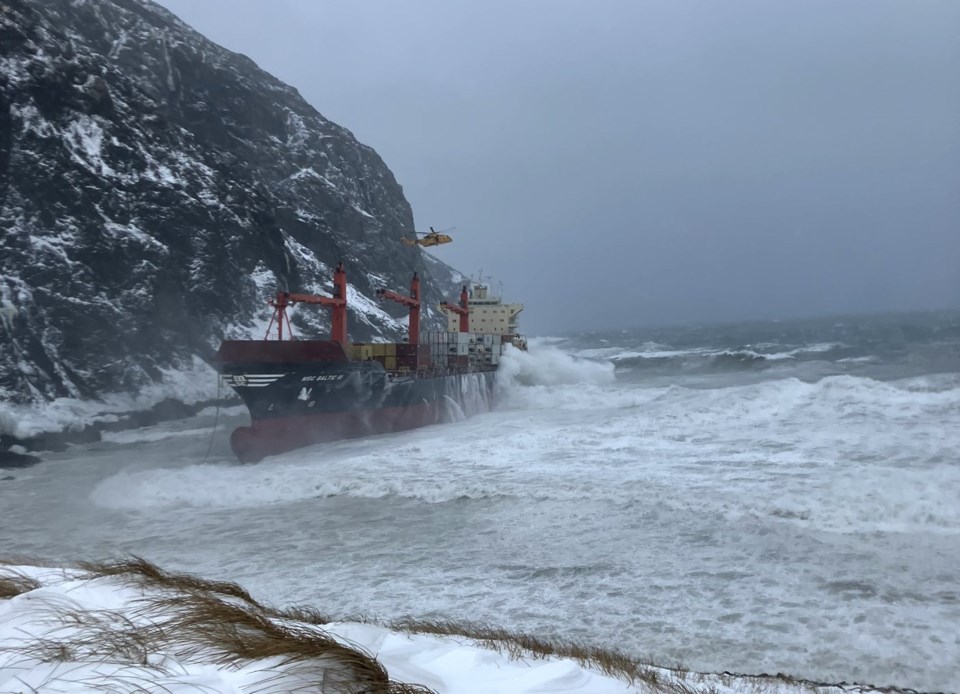LARK HARBOUR, N.L. — Rough weather on Tuesday forced salvage specialists to abandon their inspection of a large cargo ship that ran aground in a rocky cove along Newfoundland’s west coast on the weekend.
A Canadian Coast Guard spokesman says Texas-based T&T Salvage has been tasked with devising a plan to get the 207-metre MSC Baltic III off the rocks before it breaks up. But the weather has not been co-operating.
When the salvage experts boarded the ship Monday, easterly winds were gusting at 110 kilometres per hour and heavy surf was pounding the vessel, said Bruce English, a response officer with the coast guard's marine environmental and hazardous response team. When the four-man crew returned Tuesday, the wind had shifted to the opposite direction at 50 km/h with white-capped waves reaching three metres high.
“They were scrambling up the ship on a Jacob’s ladder and they were unable to get on board,” English said in an interview from Lark Harbour, N.L. “That was quite dangerous.”
The ship had a crew of 20 aboard when it lost power in heavy seas, drifted outside the entrance to Bay of Islands and then hit bottom at the edge of Cedar Cove, which is three kilometres west of Lark Harbour and opens to the Gulf of St. Lawrence.
Despite powerful gusts, the Royal Canadian Air Force crew aboard a Cormorant search and rescue helicopter safely airlifted everyone from the vessel on Saturday. By Tuesday afternoon, there were no signs that the ship was leaking fuel or had lost any of its cargo, which includes 190 sea containers filled with flour, beans, paper supplies, lumber, vehicle parts and other goods.
“We have nothing in the water; no discolouration, no sheen or oil visible around the vessel,” English said, adding that any pollution or damage caused by the vessel would be the responsibility of the owner, the MSC Mediterranean Shipping Company.
An environmental response team is monitoring a nearby beach.
English said the team from T&T must first assess the structural integrity of the ship before they can make a plan about moving it or removing cargo and the marine diesel used to power the ship. “We want to make sure that when we do hook on that vessel that it doesn’t break or split in two,” he said. “They need to assess the inside of the vessel.”
English said it appears the ship’s hull had sustained some damage, but it remains unclear when that happened. “There’s a little ripple in the skin of the vessel on the port side,” he said. “That’s visible from the shoreline … It may have buckled, but that’s pure speculation on my part.”
When the weather calms down, a dive team will inspect the ship’s underside.
Meanwhile, a four-kilometre emergency zone has been declared around the vessel, which restricts access to the sight and the use of drones. The Canadian Coast Guard Ship Ann Harvey arrived on Monday, and the CCGS Jean Goodwill was expected to arrive by Wednesday night, carrying pollution response gear.
This report by The Canadian Press was first published Feb. 18, 2025.
The Canadian Press



